Leviticus 23:27-31
27 Also on the tenth day of this seventh month there shall be a day of atonement: it shall be an holy convocation unto you; and ye shall afflict your souls, and offer an offering made by fire unto the LORD.
28 And ye shall do no work in that same day: for it is a day of atonement, to make an atonement for you before the LORD your God.
29 For whatsoever soul it be that shall not be afflicted in that same day, he shall be cut off from among his people.
30 And whatsoever soul it be that doeth any work in that same day, the same soul will I destroy from among his people.
31 Ye shall do no manner of work: it shall be a statute for ever throughout your generations in all your dwellings.
The fall holy day celebrated on the tenth day of the seventh month is called twice in the Hebrew Bible, Yom Hakippurim (
The main biblical text that describes the Yom Kippur ritual is
Leviticus 16 describes other rituals as well, including a scapegoat that carries away the sins of the Israelites. Thus, the chapter is broadly concerned with cleansing sin but not with repentance, which would become the main theme of the day’s activities after the destruction of the Second Temple in 70 CE. In such ritual practices, the significance of repentance is emphasized through the liturgical reading of the book of Jonah, whose main theme is the efficacy of sincere repentance. Most of the other activities now associated with Yom Kippur, such as fasting, are based on the interpretation of the phrase “you shall deny yourselves,” which appears in various biblical texts about Yom Kippur (e.g.,
Why is Yom Kippur important in the New Testament?
The rituals surrounding Yom Kippur play a major role in the New Testament, in which a number of texts implicitly view Jesus as a Yom Kippur offering. This association is found in a wide variety of texts: in the gospels (
9:11 But when Christ came as a high priest of the good things that have come, then through the greater and perfect tent (not made with hands, that is, not of this creation), 12 he entered once for all into the Holy Place, not with the blood of goats and calves, but with his own blood, thus obtaining eternal redemption. 13 For if the blood of goats and bulls, with the sprinkling of the ashes of a heifer, sanctifies those who have been defiled so that their flesh is purified, 14 how much more will the blood of Christ, who through the eternal Spirit offered himself without blemish to God, purify our conscience from dead works to worship the living God!
This is one of many cases that shows the manner in which the religion that would develop into Christianity is deeply indebted to the Hebrew Bible, which the early Christ-believing community interpreted in novel ways.
|
|
Kippurim can be read as Yom Ke-Purim, a "day like Purim," that is, a day of deliverance and salvation (as explained in the Book of Esther). Thus the day on which Yeshua sacrificed Himself on the cross is the greatest "Purim" of all, since through Him we are eternally delivered from the hands of our enemies.
Since man was created for the sake of teshuvah (תְּשׁוּבָה), Yom Kippur, or the Day of "at-one-ment," is considered the holiest day of the year, called "Yom ha-kadosh" (יוֹם הַקָּדוֹשׁ). On the Hebrew calendar, Erev Yom Kippur begins at nightfall on Tishri 9 and continues 25 hours through the next day until nightfall. It is a solemn day marked by complete fasting, prayer, and additional synagogue services.
|
This explains why Orthodox Jews begin the "Season of Teshuvah" beginning with Elul 1 and continuing through to Tishri 10 -- for the 40 days that Moses was upon the mountain receiving the second set of tablets. Here we also find the first inkling of the Book of Life (see Rosh Hashanah), when Moses asked to be stricken from "the Book you have written" if God would not make an atonement for his people (Exod. 32:32-3). The willingness of Moses to be "stricken from the book" on the people's behalf is a powerful image of the mediating role of Yeshua our Messiah (Heb. 9:15). | |||||||
The Meaning of the word Kippur | |||||||
The "Day of Atonement" is the English phrase for Yom Kippur. The shoresh [root] for the word "Kippur" is kafar(כָּפַר), which probably derives from the word kofer,meaning "ransom." This word is parallel to the word "redeem" (Psalm 49:7) and means "to atone by offering a substitute." The great majority of usages in the Tanakh concern "making an atonement" by the priestly ritual of sprinkling of sacrificial blood to remove sin or defilement (i.e., tahora). The life blood of the sacrificial animal was required in exchange for the life blood of the worshipper (the symbolic expression of innocent life given for guilty life). This symbolism is further clarified by the action of the worshipper in placing his hands on the head of the sacrifice (semichah) and confessing his sins over the animal (Lev. 16:21; 1:4; 4:4, etc.) which was then killed or sent out as a scapegoat. The shoresh also appears in the term Kapporet [the so-called "Mercy Seat," but better rendered as simply the place of atonement]. The Kapporet was the golden cover of the sacred chest in the Holy of Holies of the Tabernacle (or Temple) where the sacrificial blood was presented. כִּי נֶפֶשׁ הַבָּשָׂר בַּדָּם הִוא kee ne·fesh ha·ba·sar ba·dahm hee "For the life of the flesh is in the blood, | |||||||
The message of the central book of the Torah (Leviticus) is that since God is holy, we must be holy in our lives as well, and this means first of all being conscious of the distinction between the sacred and the profane, the clean and the unclean, and so on: "You are to distinguishbetween the holy (i.e., ha-kadosh: הַקּדֶשׁ) and the common (i.e., ha-chol: הַחל), and between the unclean (i.e., ha-tamei: הַטָּמֵא) and the clean (i.e., ha-tahor:הַטָּהוֹר)" (Lev. 10:10, see also Ezek. 44:23). Just as God separated the light from the darkness (Gen. 1:4), so we are called to discern between (בֵּין) the realms of the holy and the profane, the sacred and the common, and the clean and the unclean. Indeed, the Torah states "God called the light Day, and the darkness he called night," thereby associating His Name with the light but not with the darkness (Gen. 1:5).
The word "sacrifice" is korban (קָרְבָּן), which comes from the root karov (קָרַב) meaning to "draw close" or "to come near." In the Tabernacle, korbanot (קָרְבָּנוֹת) were various ritual acts that were offered upon the altar to cleanse the unclean sinner so that he or she could draw near to a Holy God. Because of this, God instituted sacrificial blood as the cleansing agent that purified from the effects of defilement and sin (Lev. 17:11; Heb. 9:22). We can see the general process of purification by considering the case of the metzora (or "leper") as described in Leviticus 14 in a ritual that somewhat resembled the elaborate Yom Kippur ritual performed by the High Priest. | |||||||
The Torah Observance | |||||||
The Role of the High Priest | |||||||
Every year on Tishri 10 the Kohen Gadol [High Priest] would perform a special ceremony to purge defilement from the Tabernacle (mishkan) or Temple (Bet Ha-Mikdash) as well as from the people of Israel (see Leviticus 16 for the details). In particular, in addition to the regular daily offerings, he would bring a bull and two goats as a special offering, and the bull would be sacrificed to purge the mishkan/temple from the defilements caused by misdeeds of the priests and their households (Leviticus 16:6). He would sprinkle the blood of the bull inside the veil of the Holy of Holies upon the kapporet (i.e., the cover of the Ark of the Covenant). Then he would draw lots and select one of the two goats to be a sin offering on behalf of the people (this goat was designated L'Adonai - "to the LORD"). He would likewise enter the Holy of Holies sprinkle the blood of the goat upon the kapporet (note that the idea that the Kohen Gadol had a rope tied around his ankle in case he died when performing these duties is likely a medieval legend). Finally, the High Priest would lay both hands upon the head of the second goat (designated "for Azazel") while confessing all of the transgressions of the people. This goat was then driven away into the wilderness, carrying on it "all their iniquities unto a land not inhabited" (Lev. 16:22). According to the Talmud, a scarlet cord was tied around the neck of the scapegoat that was reported to have turned white as the goat was led away from city. However, for the last forty years before the Temple was destroyed (in AD 70), the scarlet cord failed to change color. |
The Role of the People | |||
While the High Priest performed these functions, the people would fast in eager anticipation of the outcome of the rituals. After completing his tasks, the garments of the High Priest were covered with blood (Lev. 6:27). Only after this did the LORD accept the sacrifice (according to one midrash, as the High Priest hung out his garments, a miracle took place and his garments turned from bloodstained crimson to white; see Isaiah 1:18). | |||
Modern-day Observances of Yom Kippur | |||
Though originally focused on the role of the Kohen Gadol (High Priest) and the purification of the Sanctuary, since the destruction of the Temple in 70 AD, Rabbinic tradition states that each individual Jew is supposed to focus on his personal avodah, or service to the LORD. Most Yom Kippur prayers therefore revolve around the central theme of personal repentance and return.
By fasting and praying all day, we are said to resemble angels. By giving up the sensual pleasures of life and refraining from melakhah, we are said to live for 25 hours as if we are dead (many men wear kittels (white burial robes) and white raiment, to remind them of their fate as mortals before God). |
|
| ||||||||||||||||
The chicken is then taken to a shochet (kosher butcher) to be slaughtered and given to the poor for their Erev Yom Kippur meal (seudah ha-mafseket). Those who study the Torah understand the need for blood sacrifice-- the "life-for-life" principle implied in the Torah's sacrificial system. |
|
|
The requirement for blood sacrifice -- the "life-for-life" principle -- is the heart of the Torah's sacrificial system. The kapparot ceremony is therefore an clear acknowledgment of the authority of Leviticus 17:11, the key verse of substitutionary atonement given in the Torah: "For the life of the flesh is in the blood (כִּי נֶפֶשׁ הַבָּשָׂר בַּדָּם), and I have given it for you on the altar to atone (לְכַפֵּר) for your souls, for it is the blood that makes atonement by the life (כִּי־הַדָּם הוּא בַּנֶּפֶשׁ יְכַפֵּר)." A person who studies and believes the written Torah understands the clear need for blood atonement - notwithstanding the rationalizations developed by later rabbinical Judaism. |
Erev Yom Kippur |
The Meal before Yom Kippur |
Yom Kippur Synagogue Services |
|
| ||||||||||||||||||||
As with Rosh Hashanah, a white satin parokhet (curtain which adorns the ark in the synagogue, mimicking the curtain which separated the sanctuary from the Holy of Holies in the Temple), is hung in place of the heavy velvet one used at other times.
|
|
| ||||||||||||||||||||||||||
Worshippers then exclaim, "L'shanah haba'ah b'Yerushalayim!" After the service ends, some synagogues perform also a Havdalah ceremony. |
| ||||||||||||||||||||||||||||||||||||
|
|
| ||||||||||||||||||||||||||||||||
Yom Kippur and the New Covenant |
|
|
As it is written in the letter of Hebrews: |
Therefore, holy brothers, you who share in a heavenly calling, consider Jesus, the apostle and high priest of our confession, who was faithful to him who appointed him, just as Moses also was faithful in all God's house. (Hebrews 3:1-2) |
The Importance of a Blood Sacrifice |
The importance of blood sacrifice (i.e., substitutionary atonement) cannot be overstated in the Scriptures since it constitutes the fundamental means of atonement that is given through the sacrificial system. Indeed this principle is enshrined in the central text of sacrifice itself, Leviticus 17:11: כִּי נֶפֶשׁ הַבָּשָׂר בַּדָּם הִוא kee ne·fesh ha·ba·sar ba·dahm hee "For the life of the flesh is in the blood, A blood sacrifice is required by the LORD for the issue of sin. Leviticus 17:11 agrees with the teaching in the New Testament in Hebrews 9:22: "Without the shedding of blood there is no remission of sins" (χωρὶς αἱματεκχυσίας οὐ γίνεται ἄφεσις). In the Talmud (Yoma 5a) it is likewise written, "There is no atonement without blood." The substitutionary shedding of blood, the "life-for-life" principle, is essential to true "at-one-ment" with the LORD God. For Messiah has entered, not into holy places made with hands, which are copies of the true things, but into heaven itself, now to appear in the presence of God on our behalf. Nor was it to offer himself repeatedly, as the high priest enters the holy places every year with blood not his own, for then he would have had to suffer repeatedly since the foundation of the world. But as it is, he has appeared once for all at the end of the ages to put away sin by the sacrifice of himself... So Messiah, having been offered once to bear the sins of many, will appear a second time, not to deal with sin but to save those who are eagerly waiting for him (Heb. 9:24-ff). |
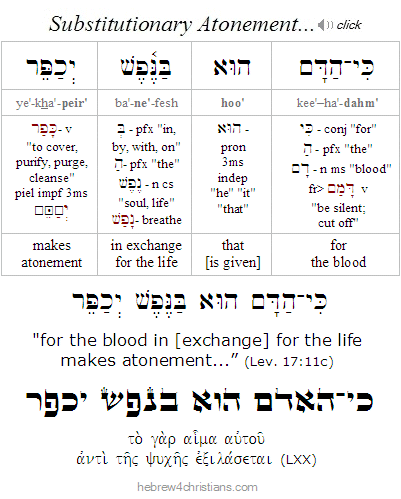 | |||
Yom Kippur, Confession, and the Book of Life | |||
What do Messianic Jews do regarding Yom Kippur? Do we fast, afflict ourselves, and confess our sins, or do we rejoice in the knowledge that we are forgiven of all our sins because of Yeshua's perfect avodah as our Kohen Gadol of the New Covenant? In other words, should we be sad and afflicted or should we be happy and comforted? In post-Temple Judaism (i.e., rabbinical Judaism) it is customary for Jews to wish one another g'mar chatimah tovah (גְּמַר חַתִימָה טוֹבָה), "a good final sealing" during the Ten Days of Awe (i.e., the ten days running from Rosh Hashanah until Yom Kippur). The reason for this is that according to Jewish tradition the "writing of God's verdict" (for your life) occurs on Rosh Hashanah, but the "sealing of the verdict" occurs on Yom Kippur. In other words, God in His Mercy gives us another ten days to do "teshuvah" before sealing our fate.... But it's up to us -- and our teshuvah -- to "save ourselves" from God's decree of death. Our merits (mitzvot) are the key: וּתְשׁוּבָה וּתְפִלָּה וּצְדָקָה מַעֲבִירִין אֶת רעַ הַגְּזֵרָה / "Teshuvah, prayer, and charity deliver us from the evil decree."
The traditional viduy (a confessional prayer consisting of two parts, ashamnu and al chet) is written using the first person plural: "We have sinned..." since kol Yisrael arevim zeh bazeh - "All Israel is responsible for one another." Traditionally al chet is recited ten times during the course of the five Yom Kippur services (once for each of the 10 commandments that we have broken). Here's how it starts: Al Chet... Confession is vitally important for Messianic Jews and Christians, since it both reminds us of our great need for God's intervention in our lives, and also helps us walk in the truth. "If we confess our sins, He is faithful and just, to forgive us our sins and cleanse us from all unrighteousness" (1 John 1:9). "Confess your faults one to another, and pray one for another, that ye (plural) may be healed" (James 5:16). But the “point-missing” is even bigger than that, because the tradition of fasting on Yom Kippur is not even biblical. The rabbis through the years have justified the fast using the words of Leviticus 23:27:
Where is fasting in that verse? The rabbis will say that it is there plain as day in the words, “you shall afflict your souls.” Now I may get a little uncomfortable when I don’t eat for a time. I may even get a little hangry – that grumpy state where hunger and anger meet. But that is afflicting my body, not my soul. Don’t get me wrong. Fasting can be a wonderful thing. It can be a time of worship or seeking the will of God. It can be a period of sacrifice and commitment, showing the Lord that you are ready to give all to Him. But if you are asking yourself just how easy can I make this fast with it still being considered a fast, you’re probably asking the wrong question. The Jews were told to afflict their souls. But notice that the affliction wasn’t the only action required. In tandem, they were also told to “offer an offering made by fire to the Lord”. To the humility of the affliction, they were told to add true worship. This is where the pieces all drop into place. This is not a physical command; it is spiritual. God is not concerned about people performing the traditions and the rituals; He wants broken hearts before Him, recognizing their own sin and His merciful provision for forgiveness. “Have an easy fast” is a perfect blessing because fasting can be very easy. It’s often a matter of missing a few meals then continuing life as before. Afflicting one’s soul is much more difficult because it involves humility, dependence, and life-change. In other words, it requires repentance – a confession of one’s sins before the Lord based on faith in Jesus and the sufficiency of His death on the cross, and a commitment to turn from those sins, removing them from your life never to go back. Afflicting one’s soul recognizes that it is not about me any longer or my easy life or my desire for comfort or what I want out of life. It is following through with the words of Paul when he wrote:
It is laying all we are on the altar before God and saying, “I am yours.” While there will be a day when all Israel will truly afflict their souls in repentance and receive the salvation that comes through a personal relationship with Jesus, that day is still yet to come. But for you, let today be the day of your salvation. Let today be the day that you offer yourself to the Lord. Let today be the day of your forgiveness, and the beginning of an eternity of peace, joy, and the perfect love that comes from our Savior and Lord, Jesus Christ.
The primary section in Scripture concerning the Day of Atonement appears in Leviticus 16-17. This passage functions as the center of the book of Leviticus, which is itself the center of the Pentateuch. This day speaks of the Lord’s gracious concern both to deal fully with his people’s sins and to make them fully aware that they stand before him, accepted and covered in respect to all iniquity, transgression, and sin (Lev 16:21). On this day, the high priest would enter the Holy of Holies to atone for the sins of Israel in order to avert the holy wrath of God for the sins of the past year and to remove their sin and its stain from them. Two healthy goats without defect were chosen. They were therefore fit to represent sinless perfection. Two Images of the Atonement The first goat was a propitiating sin offering. The high priest slaughtered this goat, which acted as a substitute for the sinners who deserved a violently bloody death for their many sins. Then the high priest, acting as the representative and mediator between the sinful people and their holy God, would take the second goat and lay his hands on the animal while confessing the sins of the people. This goat, called the scapegoat, would then be sent away to die in the wilderness away from the sinners, symbolically expiating or removing the sins of the people by taking them away. The sacrifices of the Day were designed to pay for both sin’s penalty and sin’s presence in Israel. The shedding of blood and the sending off of the scapegoat were meant to appease God’s wrath against sin and to cleanse the nation, the priesthood, and even the sanctuary itself from the taint of sin (Lev 16:30). The Lamb of God The Day of Atonement was a foreshadowing of Jesus, the Lamb of God who takes away the sins of the world (John 1:29), and our great High Priest who is able to sympathize with us in our weakness (Heb 4:14-16). These great images of the priest, slaughter, and scapegoat are all given as shadows by God to help us more fully comprehend Jesus’ bloody sacrifice for us on the cross. They were a part of the Old Testament “tutor to lead us to Christ” (Gal 3:24, NASB). Jesus’ fulfillment of the Day of Atonement is why we are forgiven for and cleansed from our sins. To preach anything else is to proclaim a “different gospel,” which is no gospel at all (Gal 1:6-7). Spurgeon drives this point home: “Many pretend to keep the atonement, and yet they tear the bowels out of it. They profess to believe in the gospel, but it is a gospel without the blood of the atonement; and a bloodless gospel is a lifeless gospel, a dead gospel, and a damning gospel.”
Jesus Christ fulfills and accomplishes forever what the two goats symbolized. The Old Testament sacrifice of animals has been replaced by the perfect sacrifice of Christ (Heb 9:23-26; Heb 10:5-10; 1 John 2:1-2; 1 John 4:9-10). Christ paid sin’s penalty (Rom 3:25-26; Rom 6:23; Gal 3:13). He redeemed us (Eph 1:7), paying the price that sets us free (1 Cor 6:20; Gal 5:1). He turned away God’s wrath (Rom 3:25) and made the path of reconciliation to God available (Eph 2:16) so that we can be forgiven for our sins and cleansed from all unrighteousness (1 John 1:9). Just as he died, was buried, and was raised in vindication, we must die to sin, be buried with him in baptism, and be raised to walk in newness of life (Rom 6:1-11; Gal 3:23-29). (Article based on Yom Kippur: The Day by Justin Holcomb; Todd Bolen offers some interesting insight into modern Jewish practices on Yom Kippur in the absence of a temple here and here.
Leviticus 23, commands for observing seven Feast Days are listed. This list is also found in Numbers 29:7-11.
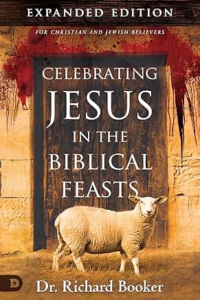 Yom Kippur is to be observed on the 10th day of the month of Tishrei on the Biblical calendar. Biblical days are from evening to evening instead of morning to morning (Gen. 1:5), so Yom Kippur starts on the evening of the 9th day of Tishrei. It occurs in September or October on our Gregorian calendar. It comes ten days after Rosh Hashanah (Yom Teruah in Hebrew). The ten days from Rosh Hashanah to Yom Kippur are called the Days of Awe.
Blood SacrificeThroughout the Bible, it’s clear that all sin separates us from God and leads to death. A blood sacrifice is the only way to pardon or atone for our sin.
Orthodox Jews consider the days between Rosh Hashanah and Yom Kippur a time of judgment. The belief is that on Rosh Hashanah, God writes the names of the righteous in the Book of Life, and those that are evil are listed in the Book of Death. Whether or not one’s name will be recorded in the Book of Life can be affected by their actions during this 10-day period.
A Christian Yom Kippur?As Christians, we have accepted the gift of Jesus as the single, eternal sacrifice that atones for our sin. Because of this, we no longer need to seek atonement as individuals. Instead of making Yom Kippur irrelevant to us, this makes this Holy Day even more meaningful!
Celebration and RepentanceWhat does a focus on sin, atonement, and repentance look like for a Christian family? Here are some things to include in your Yom Kippur to bring out the meaning and weave its concepts into your family’s legacy. 1. Pray Set aside time to spend with God – alone and as a family. Thank Him for the gift of Jesus and the forgiveness, deliverance, and salvation we have because of his sacrifice. Confess sin in your life and community and commit to turning from it to a better, Godlier path. 2. Humble your Soul This humbling is usually done in the form of fasting. The Bible doesn’t specifically say to fast on this day, though. Some people practice this humbling or affliction by giving something up, like time or money, instead. Be sure to use whatever you choose only to bring yourself closer to God. Remember when Jesus rebuked those who used fasting as an outward action instead of a way to get their heart focused on God (Matt. 6:16-18)? What they were doing wasn’t honoring God, and neither is anything else we do in His name that brings attention to ourselves and not glory to Him. If you plan to fast, pray whenever you experience hunger pangs. The Bible often positively pairs fasting with praying, so do them together and, in doing so, bring blessing into your life and glory to God. Plan for a large meal on the evening of Yom Kippur so that everyone doesn’t start the fast hungry and has some calories to work off of for the next 25 hours. Make the meal that will break the fast ahead of time so it’s ready when the fast is over. I’m guessing that no one in your house will be in the mood to labor over a meal that evening, and everyone will want something to eat as soon as possible! 3. Forgive and seek forgiveness Colossians 3:13 says that we must forgive others as we have been forgiven. Make this day the day you leave behind that grudge or bitterness you’ve been hanging on to, and let the healing begin in that relationship. On that same note, be honest with yourself about who you may need to ask for forgiveness. Decide to honor God on Yom Kippur by putting your pride aside, humbling yourself, and admitting where you wronged someone else. I do know how difficult this is! Read James 4:6-10 for encouragement. 4. Hear what God has to say to you Spend some time in God’s word on this Sabbath day. Here are some scriptures to read and meditate on to get you in the right mindset for Yom Kippur. Leviticus 16, 17:10-13, and 23:26-32 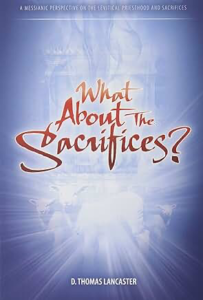 Numbers 29:7-11 Jonah (the whole book – it’s short!) Isaiah 53 and 58:1-12 Matthew 6:14-15 and 6:16-18 Romans 3:9-26 and 6:20-23 Colossians 1:13-23 and 3:12-17 Hebrews 4-10 James 4:6-10 5. Make it a holy convocation A convocation is an assembly or gathering. For it to be holy, it needs to be set apart to God. For the Israelites, this meant gathering as a nation before God. Here are a few things you could do to incorporate a holy convocation into your observation of Yom Kippur.
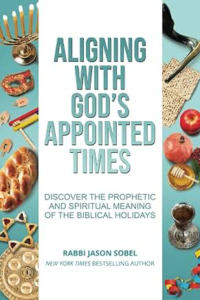
6. Wear White Wearing white on Yom Kippur is an outward expression of our acknowledgment of and gratefulness for the purity we receive through the forgiveness of our sins. It serves as both a reminder and an object lesson throughout the day, especially for children!
|
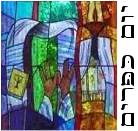
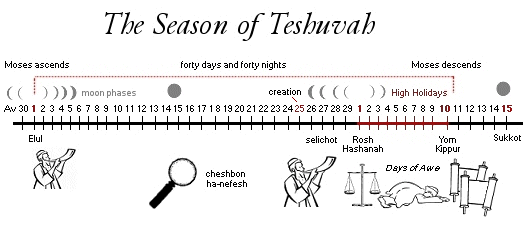

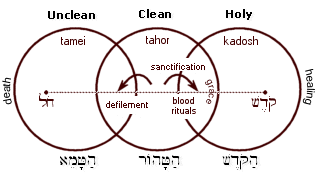
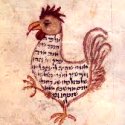
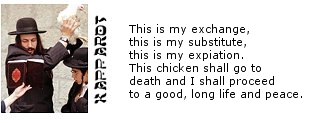



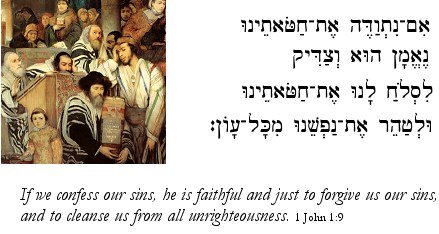
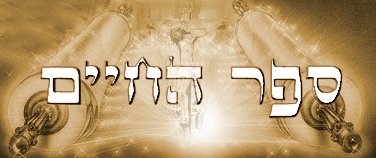


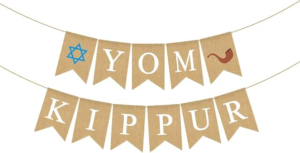
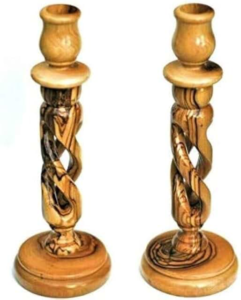

No comments:
Post a Comment